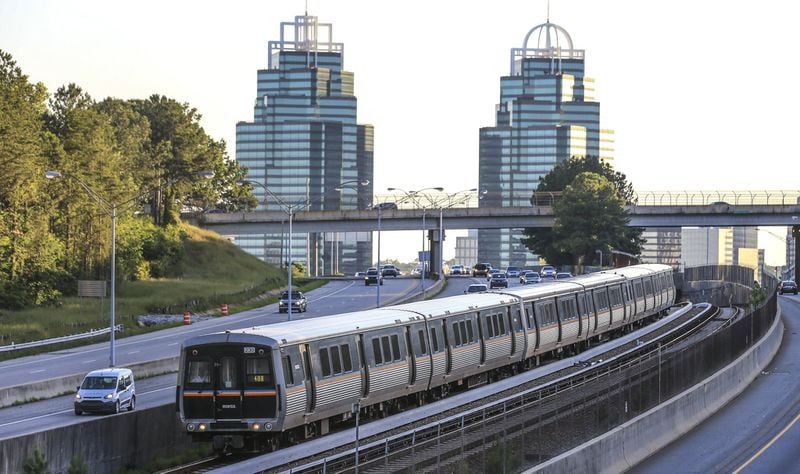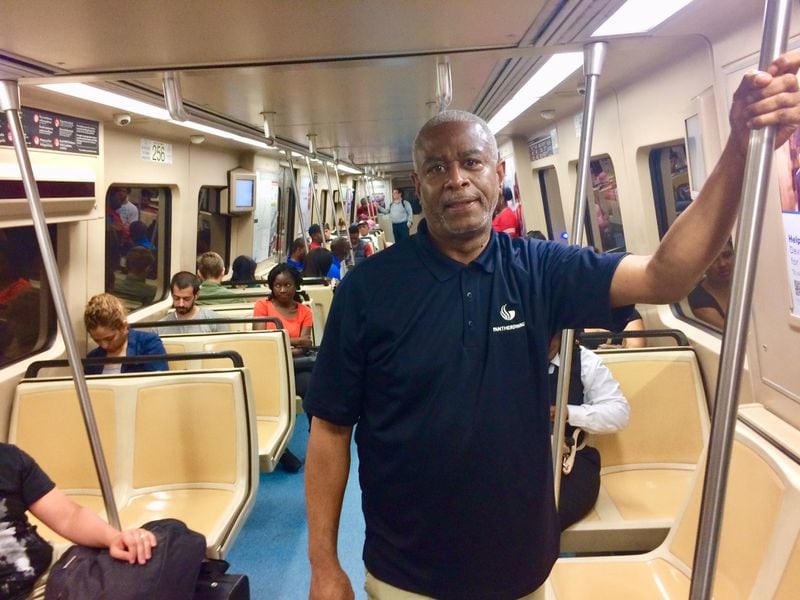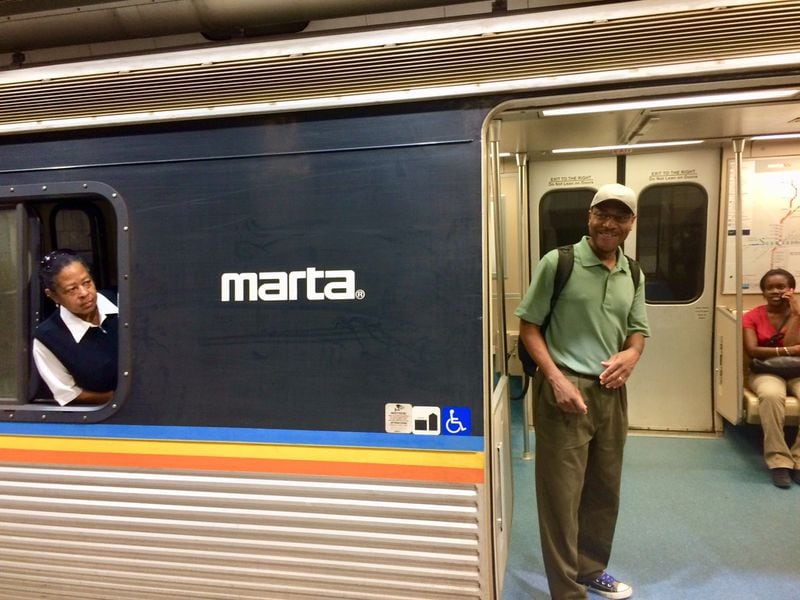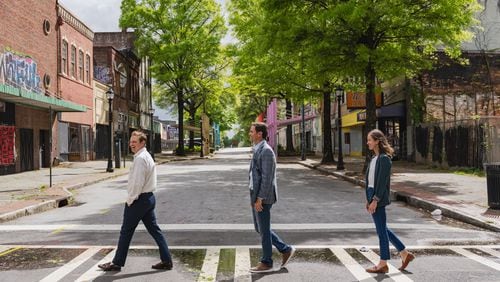MARTA’s ridership has been falling for a decade, down 22 percent since 2008.
It dipped again last year, 2.6 percent, despite the I-85 bridge collapse crisis (which brought a host of new riders) and the fact that Atlanta’s population is growing as the city gentrifies.
This is occurring as the city goes on a $2.5 billion transit building spree, one that includes a $1.5 billion bet on 21 miles of new light rail. It's a plan Atlanta voters enthusiastically supported in 2016.
I know, I know. Conundrums. It seems Atlantans like the idea of transit. And even like paying for it. They just don’t like riding it.
Transit ridership is down across America, said Ben Limmer, MARTA’s assistant general manager, although the agency is unsure why it’s falling here.
Limmer ventured some theories: People are telecommuting. Gasoline is still relatively cheap. People increasingly are buying cars (even poor people). Uber and Lyft are siphoning off riders.
“And people moving into the urban area are less likely to take transit compared to those who used to live here,” he said.
Hmm. I thought the new urbanites were all about transit. Or maybe they talk about it more than those who used to use it.
MARTA is embarking on a study to talk with riders who have left them and others who haven’t ridden.
In advance of this survey, I decided to conduct my own less-than-scientific research. The city is headed in the direction of light rail, the poor-man's rail. It's a lot cheaper than trains, but still costs $70 million a mile.
I could ride Atlanta's one existing light rail link — downtown's streetcar — but it's largely empty except for a few befuddled tourists.
So I spent six hours riding MARTA’s rails. And although I smelled weed, urine and B.O — and saw a rat — I found that people largely liked it.
The journey started at the Dunwoody station.
East Point resident Michael Youn, heading to his waiter job, thinks the system is efficient, but the “people who use it don’t treat it well.” He means litter and the like, but it was hard to hear him because the station’s alarm system kept blaring as we spoke.
Standing nearby was Dunwoody resident Barbara McCoy, who said her husband — seemingly an analytical fellow — rides the MARTA train to Atlanta each day, thus far saving him 47,000 miles of driving.
Senai Taziz, a cook living in Chamblee, rode the bus and then caught the train to Dunwoody to pick up $30 for a focus group gig. Taziz has a car but doesn’t want to beat it up. He’d like to see later times for rail service to Chamblee and more frequent buses. But he’s largely cool with how the system rolls.
So why the drop in ridership?
“People now don’t want to wait,” Taziz surmised. “They want to go when they want to go.”
Downtown at the Five Points station, Georgia State University student Ashmeen Womack said she can’t wait to become a driver. “I love the train, but as soon as I get a car, I’m ditching the bus.”
It was a common theme among the 15 people I interviewed. They like the trains. Buses are another thing. Trains, according to MARTA, are on schedule 96 percent of the time. Buses are on schedule less than 78 percent of the time.
Candy Sugarman, who works in Decatur, moved downtown and “ditched the car.” She, like the GSU student, said she “won’t deal with the buses” and instead takes Uber. Sugarman added that MARTA’s scope is “very limited,” voicing the often made complaint that the system doesn’t go where you need to go.
Actually, it largely does. But for the most part you’d need to be on a bus.
Any advice for MARTA? "Advertise that it's safe!" Sugarman said. "I've never seen an incident that frightened me or a person who threatened me."
Limmer, the MARTA guy, said the system is the nation’s second-safest per capita when measured by Part 1 crimes (murder, assault, robbery, theft, etc.)
Issues such as aggressive panhandling and guys with crazy eyes muttering to themselves are harder to measure.
Tom Murphy, who I met on the train returning to Decatur, laughed when asked if he ever felt uneasy. “I’m a mental health counselor!” he said.
Then he got serious: “There’s a stigma of riding MARTA. There’s a big racial component. It’s THE thing they need to overcome.”
Murphy figures light rail built along the Beltline “could help how we think about MARTA.”
The Beltline will get a 3-mile light rail spur built on the east side near Piedmont Park and a 4-mile link on the west, with spurs heading out to each link from the downtown streetcar.
Fans of the Beltline want more light rail along its 22-mile loop of multi-use trails, intown neighborhoods and parks. They're grumbling that MARTA will spend $500 million to bring light rail from the Lindbergh station to the newly annexed Emory University area — which is not part of the Beltline. They argue that Emory, which wasn't even in the city during the 2016 referendum, jumped the transit line in front of other projects. MARTA figures that line will be thick with riders and give them its best bang for 500 million bucks.
At the West Lake station, Qrunisha Brown guided her two small children off the train. She said she can’t wait until her car is fixed.
Back at Five Points, Chamblee resident Matthew Ervin would like to see more buses added. He finds them largely on time and efficient. He shrugged when asked why he is so alone in his bus fandom.
“I dunno,” he said. “I think it’s a culture thing. Riding the bus is not sexy.”
Roswell resident Paul Koon takes the train to the North Springs end-of-the-line because, “If I drove, I’d go to work mad and come home mad.”
He blames the drop in ridership on two things: Indifferent MARTA employees and the homeless. “I get on in the morning and they’re sleeping, smelling, begging.” The homeless, not the employees.
Greg LeCroy, who was also on a northbound train, exits at North Springs and drives 45 minutes home to Alpharetta. There are 2,300 parking spots at the North Springs station and they’re free. So he drives there because he can’t stand the bus.
He speaks of the system like one would speak of concrete — it’s functional and it’s there.
“MARTA is MARTA,” LeCroy said. “It gets me from point A to point B.”
About the Author







/cloudfront-us-east-1.images.arcpublishing.com/ajc/P7DYBH6TO7FEKG4SUXQQKADRXE.jpg)


